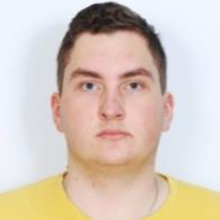
Kostiantyn Zvieriev
Work place: Department of Computer Systems Software, Igor Sikorsky Kyiv Polytechnic Institute, Kyiv, 03056, Ukraine
E-mail: zvieriev.kostiantyn@outlook.com
Website: https://orcid.org/0009-0007-1265-5927
Research Interests:
Biography
Kostiantyn Zvieriev, Master's student at the Department of Computer Systems Software of the Faculty of Applied Mathematics at the Igor Sikorsky Kyiv Polytechnic Institute. Research interests: Data and Image Processing, Methods and Algorithms for Process Optimization, Construction of Automated Computer Systems.
Author Articles
Computed Tomography Image Segmentation Technology Based on ResNet Network Integrated into the Probabilistic Model
By Zhengbing Hu Kostiantyn Zvieriev Oksana Shkurat Andrii Dychka
DOI: https://doi.org/10.5815/ijigsp.2025.04.02, Pub. Date: 8 Aug. 2025
Medical image segmentation is a significant and complex challenge in medical imaging. In recent years, deep learning models have been applied to image segmentation and have shown exceptional performance. However, medical image segmentation has a scarcity of expert-labeled data compared to other deep learning research fields. Therefore, augmenting medical expert-labeled data are primarily the easiest and fastest way to improve the deep learning model’s performance. In this paper, computed tomography image segmentation technology based on the ResNet network integrated into the probabilistic model has been proposed. The proposed segmentation technology is based on the deep learning model of the ResNet50 architecture to extract features from images and initially detect objects of interest and on the probabilistic model with weighted parameters that employs conditional random fields, the GrabCut algorithm, and the argmax function to perform the final detection of objects of interest.
To train, test, and evaluate the effectiveness of the proposed method, appropriate chest CT datasets were identified to solve the task of segmenting the lung cavity, the liver and areas affected by COVID-19. The proposed image segmentation technology demonstrates segmentation accuracy results of 73.12% by Dice Score for the COVID-19 disease dataset, 97.71% for the lung cavity dataset, and 98.36% for the liver dataset, which perform better than state-of-the-art solutions.
The proposed image segmentation technology has been compared with state-of-the-art technologies (SegNet, UNet, and FCN-ResNet50) for CT segmentation to demonstrate the effectiveness of the method. The positive outcomes strongly suggest the significant potential of the proposed image segmentation technology. According to the obtained results, the proposed image segmentation technology can be a useful auxiliary tool for doctors to segment CT images for further analysis and monitoring of statistical and dynamic indicators.
Other Articles
Subscribe to receive issue release notifications and newsletters from MECS Press journals